Displaying items by tag: Rockabill
Skerries RNLI Launches To Motor Boat In Difficulty
#RNLI - Skerries RNLI assisted a motor boat with two men aboard that was experiencing engine difficulties at Rockabill Lighthouse on Sunday afternoon (7 May).
Dublin Coast Guard tasked Skerries RNLI shortly after 12.30pm after receiving a call from a motor boat that was having difficulty getting their engine to start.
The lifeboat was launched with volunteer Philip Ferguson at the helm and crewed by Paddy Dillon, Steven Johnson and JP Tanner.
They proceeded on a course to Rockabill, and once on scene they located a 5m motor boat with two men on board that had become entangled in a lobster pot.
Following some troubleshooting advice from the lifeboat helm, a former RNLI mechanic, the men managed to successfully restart the engine. The lifeboat then stood by while they tested that everything was running smoothly.
With the men happy to be on their way again, the lifeboat returned to base and was made ready for the next call out.
Lifeboat press officer Gerry Canning said: “Sometimes, even though you are fully prepared you can just be unlucky. In this case their luck changed quickly as Philip used his experience to get them moving again. Our volunteers are always ready to help in whatever way they can.”
Saturday's 42–mile ISORA offshore race from Dun Laoghaire features Dublin lighthouses Rockabill and Kish and a finish back at Dun Laoghaire in time to join the apres–sail at Saturday's Royal St George Yacht Club Regatta. Download the race details below.
Howth Yacht Club Double-Handed Yacht Race Challenge to Feature Kish, Rockabill & Lambay
#hyc – Howth Yacht Club will run an open double-handed race on Saturday, August 23, 2014 for both spinnaker cruiser classes and white sail cruiser classes. The course will use the Kish Lighthouse, Rockabill lighthouse and Lambay and will start and finish at Howth's East pier. The course will be approximately 40 miles with a start time of 10am and hopeful finish time of late afternoon.
Double handed sailing is the fastest growing fleet within the RORC race calendar and so this challenge will give a taste of shorthanded sailing to HYC crews and hopefully will attract visitors from other local clubs.
Preparation and participation in the HYC Double handed Challenge is a great way for competitors to build shorthanded sailing skills and have a safe fun passage.
So put this in your diary, pick a crew (just one) and go for a practice sail. Entry forms, Notice of Race and Sailing Instructions will be posted soon.
Lively Lady Sails to Victory in Fickle ISORA Race to Rockabill
The course was from the start to round Rockabill to starboard and back to the finish at the mouth of Dun Laoghaire Harbour – 38 miles. The length of the original course to the M2 was 54 miles. To make the race more tactical, Ireland's Eye and Lambay were not marks on the course.
The start was provided by Larry Power of the NYC at the DBSC Pier mark. The wind at that time was south west and was gusting up to 25knots. This sent the fleet, most with spinnakers, charging towards the Bailey. It was not long before the wind decreased to 10-12 knots and veered to west.
"Tsunami" led the charge off the line but it was not long before "Lively Lady" took up poll position which she held for the remainder of the race. The fleet split as it approached Lambay. Those boats that chose to go inside the island went onto white sails while the boats that stayed outside could hold their spinnakers. There did not appear to be an advantage to either side of the island.
The fleet stayed well bunched at it approach Rockabill with "Lively Lady" rounding first followed by "English Mick" and "Jedi". On the return leg the wind decreased further to 8-10 knots from the west. Again the decision was whether to hold the spinnaker for the tight reach and what side of Lambay to go. "Lively Lady" who was leading the fleet again went inside while most of the fleet remained outside the island. This time however, there appeared to be an advantage as "Lively Lady" pulled further in front.
Passing Howth Head and approaching the finish, the wind got even more fickle. As the lead boats entered Dublin Bay the wind backed the south west giving abeat to the finish. However, there was no stopping "Lively Lady" who took line honours and first in Class 1 and Overall. "Tsunami" took 2nd place in Class 1 while "African Challenge" took 3rd in Class 1. "Jedi" took 1st place in Class 2 and 2nd Overall. "Adelie" took 1st in Class 3 and 3rd overall.
The finish was provided by Martin Lawless on the NYC.
The next race is on the 10th September, the "James Eadie Race" from Pwllheli to Howth.































































